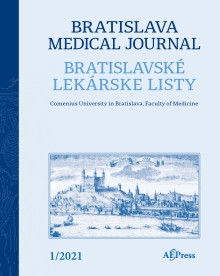Journal info
|
||||
Select Journal
Journals
Bratislava Medical Journal 2024 2023 2022 2021 2020 2019 2018 2017 2016 2015 2014 2013 2012 Ekologia - Ecology Endocrine Regulations General Physiology and Biophysics Neoplasma Acta Virologica Studia Psychologica Cardiology Letters Psychológia a patopsych. dieťaťa Kovove Materialy-Metallic Materials Slovenská hudba 2025Webshop Cart
Your Cart is currently empty.
Info: Your browser does not accept cookies. To put products into your cart and purchase them you need to enable cookies.
Bratislava Medical Journal Vol.118, No.6, p.347-354, 2017 |
||
| Title: Therapeutic effects of melatonin and quercetin in improvement of hepatic steatosis in rats through supression of oxidative damage | ||
| Author: M. Esrefoglu, A. Cetin, E. Taslidere, H. Elbe, B. Ates, O. E. Tok, M. S. Aydin | ||
| Abstract: BACKGROUND: Non-alcoholic steatohepatitis, a cause of cirrhosis, is characterized by fatty infiltration of the liver, inflammation, hepatocellular damage and fibrosis. The aim of the present study was to investigate the effects of melatonin and quercetin on CCl4–induced steatosis characterized by fatty infiltration of the liver, inflammation, hepatocellular damage and fibrosis. METHODS: Rats were divided into 5 groups: Ethanol, Olive oil, CCl4, CCl4+Melatonin (CCl4+Mel), CCl4+Quercetin. Rats were sacrificed and livers were removed for being evaluated by histopathological, immunohistochemical and biochemical methods. RESULTS: In CCI4 group, vacuolization, vascular congestion, haemorrhage, necrosis, and inflammatory infiltration were identified. The mean tissue MDA level was increased, whereas GSH level and SOD and CAT activities were decreased in comparison with ethanol and olive oil groups. MDA levels were decreased in CCI4+Quercetin and CCI4+Mel groups versus CCI4 group. CAT activity of CCI4+Mel group was higher than that of CCI4 and CCI4+Quercetin groups. The mean tissue GSH level of CCI4+Mel group versus CCI4 group was significantly increased. CONCLUSIONS: By the means of histopathological examination, we suggest that both agents are beneficial against necrotic and apoptotic cell death during steatosis. Thus, melatonin and quercetin might be beneficial in the improvement of hepatic steatosis by supporting conventional therapy in humans (Tab. 1, Fig. 5, Ref. 53). |
||
| Keywords: antioxidant, melatonin, quercetin, liver | ||
| Published online: 22-Jun-2017 | ||
| Year: 2017, Volume: 118, Issue: 6 | Page From: 347, Page To: 354 | |
| doi:10.4149/BLL_2017_066 |
||
|
|
 download file download file |
|

